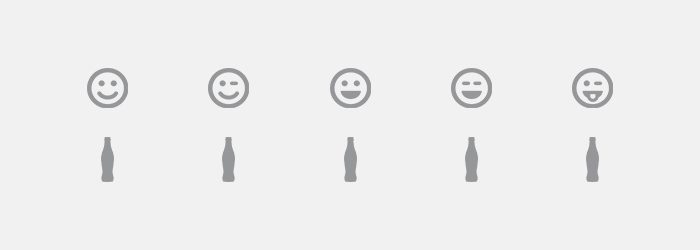It was the early 1970s. Soda makers were in the middle of a bare-knuckle fizz-fight. And a young Psychophysicist from Harvard, named Howard Moskowitz, was about to get very busy.
The man’s interest lied in studying the peculiarities of taste buds. So, Pepsi hired him to uncover something. They wanted to know, how much of aspartame(an artificial sweetener) would be ideal for a can of Diet Pepsi.
It was Howard’s job to figure out, between 8 to 12 percent, what would be the perfect degree of sweetness that’ll sway millions of tongues in the direction of bliss.
He began with the obvious things to do.
Made samples that had a varying degree (8.0,8.1,…11.9,12) of sweetness. Went out to thousands of people. Got them to try different versions. Captured what they thought about each sip that they had taken.
Mehs, ahas, and occasional burps made up for mountains of data.
The hard part was over.
Next, he applied some statistical analysis to sift through the collected feedback. Plotted the results on a graph. And came up with nothing. As the data didn’t point anywhere.
He took his time. Gave it a serious thought.
But there was no illumination to be found.
He knew the data was alright. Just the answer wasn’t evident yet. As years passed, his walks, dinners, and other activities, grew increasingly occupied with thoughts about the riddle of the perfect pepsi.
Until one night, at a restaurant in White Plains, New York, his unconscious smuggled a revelation. He was right, there was nothing wrong with the data. Its messiness consisted of the answer, of course, not the one they were looking for.
They were posing the wrong question.
There was no perfect pepsi, there were perfect pepsis.
As Malcolm Gladwell encapsulates Howard’s genius in his brilliant talk, “This was one of the most brilliant breakthroughs in all of food science.”
Though, Pepsi didn’t think this was the case and decided not to buy into his idea.
This rejection only made his aspirations more pronounced. He understood that the proliferation of this idea was the key to deriving happiness from food. So, he stayed at it.
Then, a new client wanted him to embark on a quest to find the perfect pickles. This time, of course, wisdom had crept in. He told them at the outset, that they had to look for the perfect pickles instead. And pursued the goal with utmost passion.
Zesty pickles came about as a result. So did, Cherry Vanilla Dr. Pepper, extra chunky tomato sauce and many others. The food industry has never been the same.
The lesson lies in the taste. It lies in the desired outcomes that different people want and cannot necessarily describe on their own.
I know what you’re thinking.
How could you possibly apply this to your SaaS business?
We can’t spin out multiple versions of the product, can we? We can’t.
Agreed. We cannot emulate what Howard did with food. But we can keep his insight.
Here’s one approach:
Remember, it doesn’t just concern the product. It’s about everything else that’s associated with it. That forms the holistic experience for a customer.
A segment is defined by market, budget, accessibility, pain level & customer life cycle as defined in this blog.
The purpose of this horizontal approach to segmentation is to make it easy for your prospective customers to find value in your product.
To know, why strangers are buying your stuff, to know who are these strangers and what drives them.
Let’s take the case of MailChimp. It’s an email marketing service provider.
Millions of people use their product to send emails. Of course, intention varies, so does the utility value that they derive from it.
If you head over to their resources section, you’ll find guides on how Designers, bloggers, musicians, nonprofits and others can use MailChimp to send better emails.
Why not have one ultimate guide for all users? The perfect one.
Well, they’re serving different segments. And there’s no perfect guide to do that, there are perfect guides. They’ve identified important segments and they’re approaching them with whatever it is that matters most to these segments.
Okay. Let’s look at another approach.
Copyblogger Media has an online sales and marketing platform called the Rainmaker platform.
They’ve been killing it at content marketing for a while.
Recently, they launched a podcast network, with different shows that have a deep focus.
Writing. Entrepreneurship. SEO. Copywriting. Editing. Podcasting. Design. A different podcast on each subject.
But why did they do it?
In the past, they ran another show which was called Internet Marketing for Smart People Radio, which was great. It was followed by The Lede, yet another show, which touched upon all the subjects mentioned above.
Wasn’t one podcast enough? One could always use different episodes to talk about different subjects?
You know the answer.
There’s no perfect podcast. There are perfect podcasts, and they get it.
All their shows run on the Rainmaker platform. They appeal differently to different listeners. But their core offering remains the same, and that’s what they sell.
Think about it.
Many insights can sprout from your user base. You ought to look for them.
Segment. Then, look for patterns. See where they lead you.
Observe. And then bring it back in different aspects of your business.
The data of course to us are blankets
Shielding the reader from the truth inside them
while we discourse about the surface
The world seethes on, with none to guide them.





